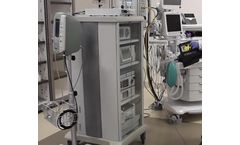Infection Control Practice Articles & Analysis
5 articles found
What is biofilm? Biofilms are defined as communities of micro-organisms attached to a surface, or one another, and encased within a matrix of extracellular polymeric substance (EPS). The EPS makes up the largest component of the biofilm, and in the biological environment is generally composed of polysaccharides, proteins, glycolipids, blood products, cellular debris, extracellular enzymes, metal ...
In addition, C. auris is able to survive on surfaces for long periods of time, making it difficult to control the spread of infection, and is hard to kill with commonly used disinfectants. ...
Families need to at least know the basics of wound care i.e.: wound care / dressing technique, infection control practices and nutrition to handle their loved ones at home. ...
For those frequently used instruments, this is why autoclaves have become an essential part of any in-office infection control program. Autoclaves combine high temperature and high pressure over a period of time to disinfect and sterilize, but it’s a process that must properly executed, every time. The Center for Disease Control (CDC) ...
It is unclear whether some respiratory support devices may increase the dispersion of infectious bioaerosols and thereby place healthcare workers at increased risk of infection with severe acute respiratory syndrome coronavirus 2 (SARS-CoV-2). ...





